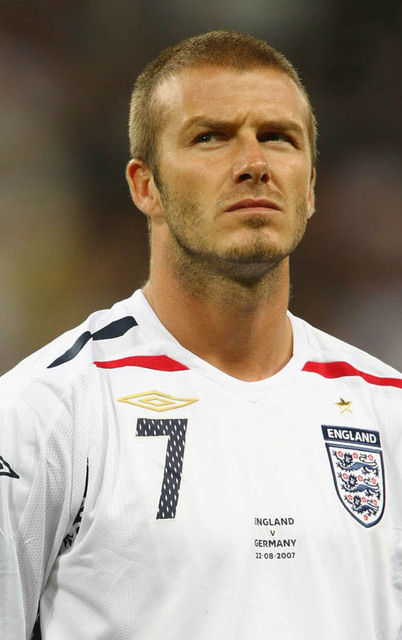The Evolution of Football Sponsorship at Nationwide
For years sponsorship has been big business. Brands clamour to associate themselves with clubs, sporting events, festivals and broadcast properties. For some brands it has been difficult to prove the benefit and impact that these sponsorships provide. However when sponsorships have been activated as a component part of an overall strategy their values, whilst not always robustly quantifiable, are often seen as intrinsic drivers of performance.
The reason for sponsorships can be varied. From wishing to get your logo/brand out to as wide an audience as possible, to being associated with something that your target audience are passionate about all the way through to providing the perception that your brand has stature, which might be difficult to evidence elsewhere.
Stage One – National
As a national brand, with the general customer perception of smaller and almost provincial provider, Nationwide needed a vehicle to back-up their national presence. Football was an obvious area, as it is the sport with the largest spectator and playing base. But rather than jump in with a top flight club that would have provided potential view of scale quickly, it was equally as likely to polarise views.
The option to sponsor the football league came up and this was seen as a perfect opportunity. After all, nearly every town and city in the country has a football club and their support is fanatical. Being title sponsors of the league and subsequently the conference provided the real ‘one of us’ feel to the sponsorship.
Nationwide did such a great job of its sponsorship, the tail of the deal lastesd a minimum of 8-12 months after Coca Cola assumed the role. By that time Nationwide was now being seen as a national player.
Stage Two – Scale
The next stage once Nationwide was recognised as a national player was to create the perception that we were a large-scale organisation to rival the Big 4 Banks (after all Nationwide was always largest or second largest mortgage lender in the UK).
The opportunity to sponsor England came about. Green Flag has been sponsors but did very little with their partnership. This was a deal that could be done and for us at Nationwide to make a big impact with a premium property. The England national team was going through quite a successful period (relatively speaking).
However, as with the dilemma of polarising views that came with sponsoring a top flight club, we could be in danger of alienating whole geographies within the UK. Many high level discussions were had and the decision to go ahead was on the basis we could be title sponsors or associate sponsors for the other home nations (Northern Ireland, Scotland and Wales).
Thankfully discussions with the other home nations went well and they were also secured as partners. It is a relatively well shared notion that Nationwide approached these sponsorships a little differently and with a bit more creativity than previous sponsors. Undertaking guerrilla marketing techniques before the World Cup in France and utilising player appearances in a better way than just wheeling players in to offices.
This stage was all about creating the perception of scale or size, which according to all our research and customer feedback it did.
Stage Three – Giving Something Back
Scale was achieved and the public seemed to perceive us as a genuine alternative to the Big 4 Banks. However as a brand Nationwide wanted to embody everything that a building society stood for. At the same time in the sponsorship team we wanted to make the sponsorship more valuable and connect it at a deeper level with our customers. Nationwide as a business had adopted “Proud to be Different” as both a strapline and mission statement. This was seen as a way of underpinning our difference and benefits of coming to a building society, without using confusing financial services words such as ‘mutual’, ‘members’ and ‘Building Society’.
The whole concept was to highlight how we are different through everything we do and in every way we interact with our audience. This was demonstrated through the radio ads featuring the Little Britain actors and the TV ads featuring Mark Benton, using humour for the first time in a major campaign for a financial services provider.
We decided to take this in to our sponsorship activity and rather than using it purely as an opportunity to gain exposure we wanted to turn the whole sponsorship on its head and give all the benefits back to the customers. The sponsorship activity was rebranded ‘Sponsored By You’ essentially as a Nationwide customer you were sponsoring the England team. Your name appeared in programme ads. Your name could appear on digi-boards, you could meet the players etc.
This turned sponsorship from a pure brand and awareness activity to a channel for loyalty and customer retention. This was aided by the move into UGC and Social Media before any of the current players were either here in the UK and definitely before any of them made it big.
Summary
The evolution of our strategy at Nationwide replicates how sponsorship when done well, has evolved. To make sponsorship effective, you need to take it beyond the badging and exposure of tradition and move it across many channels and give something to the target.
Whilst sponsorship can not claim credit for the shift in mindsets of the public it was certainly a substantial contributory channel. Thankfully throughtout the evoultion the company were willing to take risks, push boundaries and offer a creative approach. Crticial to gain standout in my opinion.
Bring your sponsorship to life and make it part of your targets conversation. That way you can move sponsorship beyond awareness driving, to much more of an engagement driving activity.
Most people know of my experience in digital marketing, however I have masses of experience in sponsorship and above the line. However, so I don’t disappoint, the follow-up to this post will be ‘How sponsorship properties can be brought to life online’. Some of this will be from personal experience at Nationwide, whilst others will be looking at best practice.
As always comments appreciated on here or via eMail.




 Any organisation that sponsors any property, whether it is a football club, event or a broadcast property such as
Any organisation that sponsors any property, whether it is a football club, event or a broadcast property such as